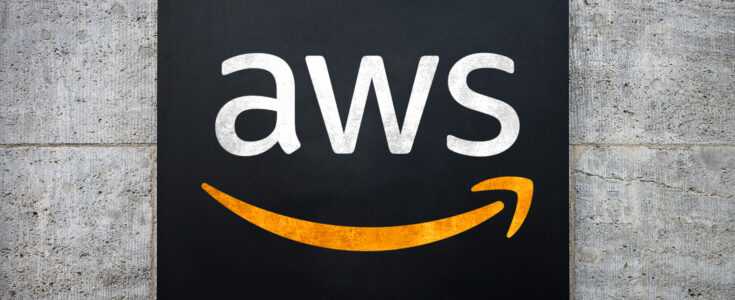
Last Month at AWS: May Edition

As people continue to take stock of a reopening society that has been impacted by a global health crisis, it is evident that having degrees of flexibility attached to our personal and work lives is a good thing. The ability to adapt to a given situation is a critical part of how we navigate the challenges that are thrown at us, and success is often measured by how we incorporate the lessons learned.
In the business world, flexibility is a state of mind that many of us have accepted over the last year. Granted, certain workplace elements are still in a state of flux, but the new normal has become, well, normal. What often matters is that the companies we work with have also adjusted to fit the current status quo.
AWS, for example, made certain that its Summit Online – Americas in mid-May was available to as many technologists as possible, with the virtual conference featuring a plethora of keynote speakers and breakout session over its two days. And while in-person events are still (sadly) being impacted by the pandemic, the opportunity to learn more about the AWS ecosystem in the comfort of your own home ticks all the flexibility boxes.
Summit Online aside, AWS always has a bunch of announcements to release, and May was no different. These announcements included the launch of Amazon FinSpace, updates to AWS IoT Tester and AWS Security Hub, the arrival of Amazon Kinesis Data Analytics Studio and some major updates to Amazon SageMaker.
With that in mind, the AWS Partner Team at Apexon has sifted through last month’s stream of product-related news, with the aim being to give you our take on why these announcements matter. There is a lot to dive into, so let’s get cracking.
AWS launches Amazon FinSpace
Posted On: May 3, 2021
AWS introduced Amazon FinSpace, a new fully managed data management and analytics service that makes it easy to store, catalog and prepare financial industry data at scale. FinSpace “removes the heavy lifting” by reducing the time it takes for financial services industry (FSI) customers to find or access all types of financial data for analysis – from months to minutes, reportedly.
Why it matters:
As a digital engineering company, Apexon helps customers to leverage available information to make data-driven decisions. The launch of a scaled offering such as Amazon FinSpace will be an important part of reducing the turnaround time for FSI customers in terms of achieving the required data analytics capabilities.
Finding not only the right data but also ensuring that the data is both secure and compliant can be a major project for data engineers, so anything that makes the task more efficient is major news. By integrating FinSpace, FSI customers will be able to reduce the time it takes to get this information from internal data stores – portfolio, actuarial or risk management systems, for example – or external third-party systems.
FinSpace also has more than 100 ready-to-use functions such as time bars and Bollinger bands, all of which are used to prepare data for analysis. In addition to these functions, we can also leverage the custom functions and notebooks for data analytics purposes.
You can learn more about Amazon FinSpace by clicking here.
Updated AWS IoT Device Tester for AWS IoT Greengrass is now available
Posted On: May 6, 2021
AWS IoT Device Tester for AWS IoT Greengrass is a test automation tool for your IoT devices running AWS IoT Greengrass.
The update now includes tests to validate if a device running AWS IoT Greengrass 2.1 can connect with AWS IoT Core and send and receive messages using MQTT. The updated Device Tester also includes tests to validate if a device running AWS IoT Greengrass 2.1 can run Lambda functions.
Why it matters:
Automation plays a pivotal role in digital transformation and digital engineering. At Apexon, we are firm believers in an automation first policy.
For our existing IoT projects, we frequently had to implement health checks and compatibility checks. However, the addition of an automated connectivity check and platform compatibility check via an IoT Device Tester service would reduce the dependencies on manually developed solutions.
You can read more about this upgrade here.
AWS Security Hub now supports bidirectional integration with Atlassian Jira Service Management
Posted On: May 26, 2021
AWS Security Hub now supports a bidirectional integration with Atlassian Jira Service Management (JSM).
You can now automatically create and update issues in Atlassian JSM from AWS Security Hub findings. Updates to those issues in Atlassian JSM will be synced with the findings in AWS Security Hub. This integration is available via the AWS Service Management Connector for JSM app.
Why it matters:
As digitization becomes the prevailing business optimization strategy, the need for higher levels of security becomes more apparent. This is especially true in public cloud solutions, where security is a vital component.
The AWS Security Hub is a key part of ensuring that we (as a company) are on our guard, even more so when we are setting up alerts and postures across AWS accounts.
Being an ISO 27001/27002/9001 certified practitioner, Apexon follows all the required compliance processes. In addition, we can make sure that all projects (including infrastructure compliance) get audited in a timely manner using automated security checks based on the AWS best practices and industry standards.
With the introduction of bidirectional integration with Jira, we would be able to adhere to stricter and tighter compliance requirements for identified security issues and specific severity levels.
You can read the full announcement here.
Amazon CloudWatch Application Insights now supports container monitoring
Posted On: May 20, 2021
This update allows app developers to easily setup monitoring, alarms and dashboards for applications deployed in Amazon Elastic Container Service (ECS), Amazon Elastic Kubernetes Service (EKS) and Kubernetes on EC2 containers running on AWS with CloudWatch Application Insights.
According to AWS, CloudWatch Application Insights is a capability that helps customers monitor and troubleshoot their enterprise applications running on AWS resources. As a result, the new feature adds monitoring tier options for capturing the metrics, telemetry and logs for monitoring the health and wellness of applications running in containers on AWS.
Why it matters:
Containerization is always a hot topic in the modern application development universe. And almost all modern applications are moving towards micro-services where containerization plays the key role.
The primary focus under our Cloud Migration, Modern Application Development and Container Services offerings is to “break” the application away from monolithic and move to micro-services using containerization. To achieve this state, we leverage AWS-managed services like Amazon Elastic Container Services (ECS) and Amazon Elastic Kubernetes Services (EKS).
In addition, we track and monitor micro-services in AWS by using Grafana and Prometheus – both of which require some efforts to make this containerization available.
With CloudWatch application insights now supporting container monitoring, this would not only accelerate the tracking and monitoring process of micro-services but also make it easier to achieve with less effort and without the need for additional tools.
Learn more about this upgrade here.
AWS announces Amazon Kinesis Data Analytics Studio
Posted On: May 27, 2021
AWS has now made Amazon Kinesis Data Analytics Studio available and accessible to developers. According to the product announcement, this enables you to “interactively query data streams in real time, and easily build and run stream processing applications using SQL, Python, and Scala. With a few clicks, you can launch a serverless notebook to perform ad hoc querying and live data exploration on data streams and get results in seconds.”
Why it matters:
Our dynamic, fast paced and connected world means that any competent digital engineering company would want to have real-time analysis for connected devices, video streaming and any other digital asset that makes the end user’s life even simpler.
With the availability of real time analytics with Kinesis, this becomes so much easier and faster to achieve the required analysis of, say, video feeds of customer centers, mega malls or retail locations. The live data aspect is also a vital part of understanding the actionable insights being generated by connected devices such as smart watches or smart cycles.
You can read more about Kinesis and where it is available by clicking here.
Amazon SageMaker Autopilot
Posted On: May 19 and May 28, 2021
Amazon SageMaker Autopilot automatically builds, trains, and tunes the best machine learning models based on your data, while allowing you to maintain full control and visibility.
AWS announced that this regionally supported product can now perform cross validation on input datasets under 50,000 rows for all problem types – in particular, regression, binary classification and multi class classification. This will drastically improve the model quality and, depending on dataset and problem type, you may see improved model quality by up to 35%.
Another new feature of SageMaker Autopilot will provide users the option to auto deploy the best trained model after running an experiment to create models.
With the auto deploy option enabled, the product will automatically create an endpoint and deploy your best model, enabling you to run real-time inference on your endpoint. As a result, you can modify or delete the endpoint at any time to meet your changing inference needs.
Why it matters:
One of the major challenges in machine learning is to have both a huge pool of data and the ability to identify the best model to solve the problem presented. Often, it is difficult to identify the best model out of all possible models.
With the introduction of SageMaker Autopilot, cross validation on small-sized sampling is automatically applied to all the possible models. The additional feature of auto deployment on the trained or best model would go a long way to solving any ML problems with speed and efficiency.
Ultimately, these two features will help to identify the best model, removing the need to put in significant efforts to do a k-fold analysis of data for each possible option. In addition, SageMaker also makes sure which model can work best for the data against which the model is not trained.
Check back next month for more AWS-related announcements and updates. And if you want to learn more about our partnership with AWS, please contact us using the form below.




